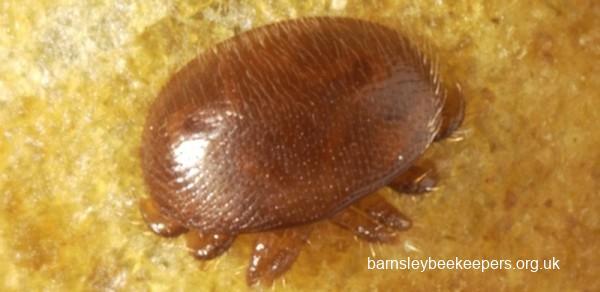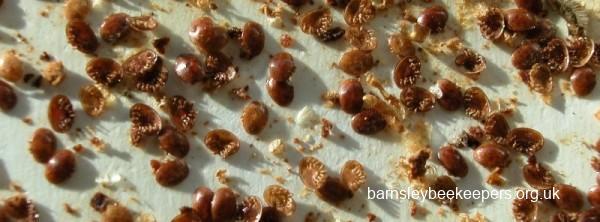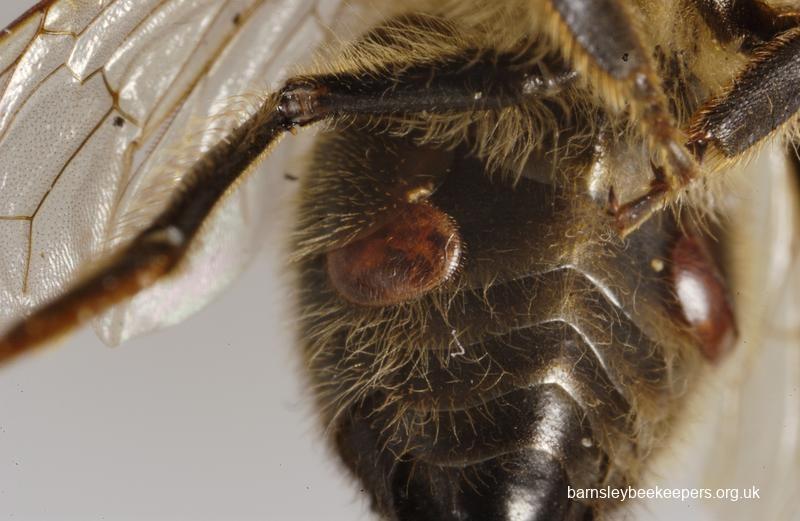Understanding the Threat and Taking Action to Protect Our Bees

Varroa destructor — a name that sends a chill through every beekeeper’s spine. This tiny, reddish-brown mite has become one of the most serious threats to honey bee colonies in England, Scotland, and Wales. Since its arrival in the UK in 1992, the mite has spread rapidly, now endemic across most regions except a few isolated parts of Scotland and remote islands.
In response to both its devastating impact and new livestock export laws, the UK government designated Varroa destructor as a reportable pest on 21st April 2021. This means that all beekeepers have a legal duty to report its presence in their colonies — a crucial step in monitoring and controlling the spread of this pervasive parasite.

What Makes Varroa Destructor So Dangerous?
Varroa mites feed by puncturing the bee’s body wall to reach its fat bodies, vital organs that play a key role in the bee’s immune function and overall health. The damage from feeding alone is serious, but it gets worse: these mites are also vectors for several viruses that can weaken or even destroy entire colonies.

Varroa prefer nurse bees in the summer and survive the winter by clinging to adult bees in the winter cluster. Their flattened shape allows them to hide between a bee’s body segments, hitchhiking undetected from hive to hive.
Inside the Varroa Life Cycle
Understanding the mite’s life cycle is essential for effective management:
- Reproduction begins inside capped brood cells, just before sealing.
- While they prefer drone brood (due to the longer development time), they will also infest worker brood.
- Once sealed in, the female mite feeds on the developing larva, establishing a feeding site that she and her offspring use.
- Eggs are laid at 30-hour intervals, with the male hatching first, followed by females.
- Mites mate within the cell, and mature females leave with the emerging bee. The rest — immature females and males — die within the cell.
The faster development time of drones allows Varroa populations to increase more rapidly in drone brood, making regular monitoring of these cells essential.
Spotting the Signs: How to Detect Varroa
Varroa mites are around the size of a pinhead (about 1.6 mm by 1.1 mm) and easily visible against the pale bodies of pupating bees.
There are a few simple methods for detection:
- Open mesh floors: Check debris below the colony for fallen mites.
- Solid floors: Use an uncapping fork to examine drone brood — mites stand out clearly against white pupae.
Reporting and Compliance
If you’re registered with the National Bee Unit’s (NBU) BeeBase, reporting is straightforward. Simply log in to your account and tick the box to indicate the presence of Varroa at each apiary.
For those not registered, a simple reporting form is available, allowing you to comply with legal obligations without having to submit personal details to BeeBase.
Managing Varroa in Your Colonies
Total elimination of Varroa is sadly not an option — even the healthiest colonies in the UK are unlikely to be completely free of mites. The key is to manage Varroa levels effectively to minimise harm.
Regular monitoring and timely intervention are essential. Integrated Pest Management (IPM) is widely recommended, combining chemical treatments (only those approved for use) with practical methods such as drone brood removal and hive hygiene practices.
The National Bee Unit provides an excellent range of resources, guides, and updates to help you make informed decisions about managing pests like Varroa. Visit www.nationalbeeunit.com for more information.
Stay Connected, Stay Protected
If you haven’t yet, consider signing up to BeeBase. As part of the Healthy Bee Plan 2030, it helps safeguard our national bee populations. You’ll receive access to valuable resources, alerts, and support from your local Bee Inspector — experts who can offer comprehensive advice tailored to your apiary.
Your vigilance, combined with timely action and shared knowledge, is critical in the ongoing fight to protect our precious honey bees from Varroa destructor.
